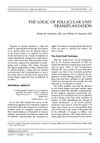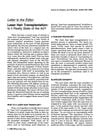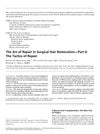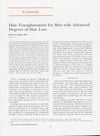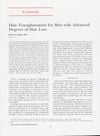The Art of Repair in Surgical Hair Restoration Part I: Basic Repair Strategies
September 2002
in “
Dermatologic Surgery
”
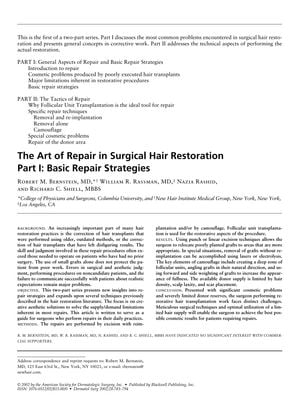
TLDR Effective repair of bad hair transplants requires skilled techniques and careful use of donor hair, with strategies like reimplantation and camouflage, and new methods to minimize scarring.
In 2002, Bernstein et al. discussed the complexities of repairing poorly executed hair transplants, emphasizing the need for skillful surgical techniques and judicious use of the limited donor hair supply. They identified common issues such as surgical and aesthetic errors, operating on non-candidate patients, and setting unrealistic expectations. The authors recommended strategies like excision with reimplantation and camouflage, with a preference for follicular unit transplantation. They stressed the importance of natural graft angling and avoiding over-harvesting donor hair to prevent a depleted supply, which is a significant limitation in repair procedures. The document also introduced "Follicular Unit Extraction" as a method for minimizing scarring and preserving hair alignment in repairs. The conclusion highlighted the potential for reversing cosmetic defects from poor techniques, but underscored the challenge of limited donor hair due to previous surgical wastage.
